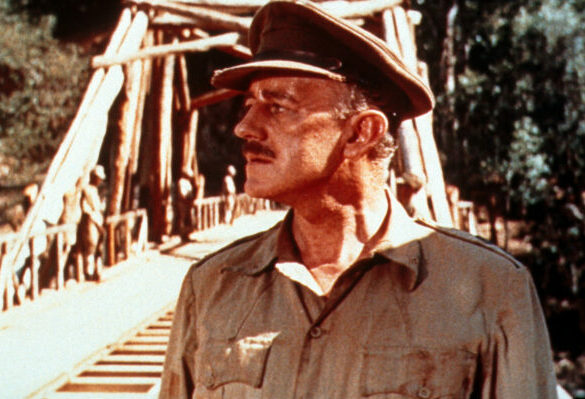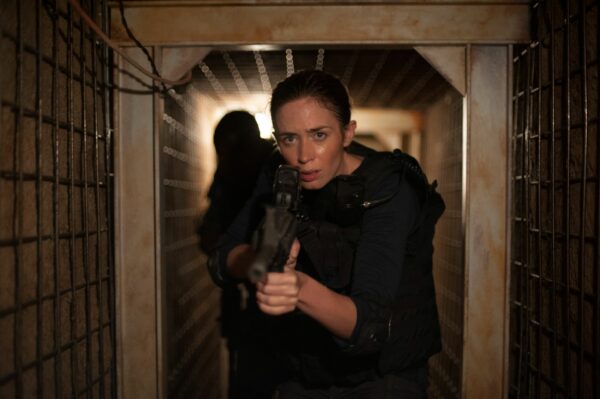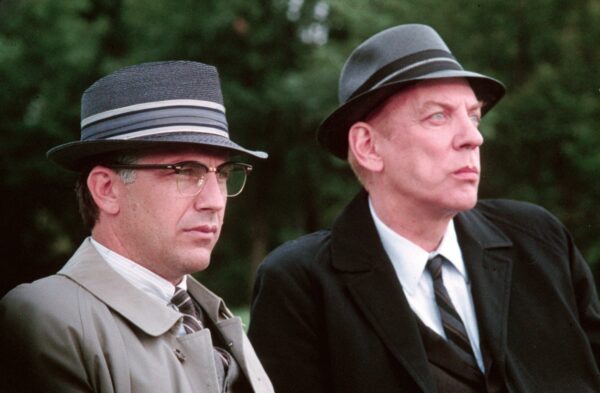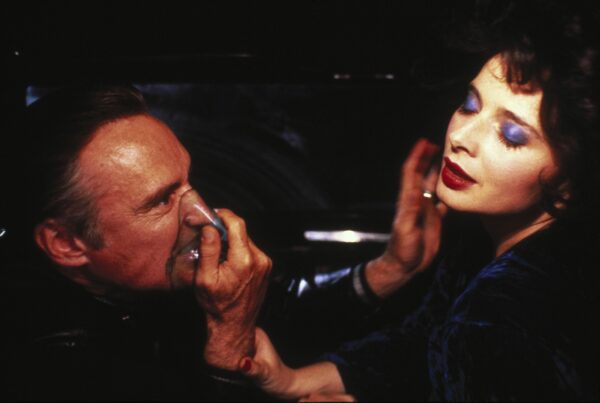
We’ve pulled together our list of the greatest movie stories. For more great video content and Top 10 movie lists, subscribe to our YouTube channel.
Why do we tell stories? And what is it about visual narrative that we find so compelling that keeps us wanting more and more?
Are we seeking knowledge, connection, sheer enjoyment, all three, or something else entirely? In a look back through Hollywood history we’ve covered it all to bring you the Ten Greatest Movie Stories Ever Told.
Subscribe to our YouTube channel
10. The Monomyth, or Hero’s Journey
What is it?
Kicking things off, we’re looking at a classic narrative – the monomyth, also known as the hero’s journey. This is where our protagonist sets out on an adventure, emerges victorious in a crucial crisis, and returns changed for the better as a result.
Classic examples:
Avatar (2009) combined pioneering CGI effects with the hero’s journey to become the highest grossing movie of all time. Clarice Starling takes on Hannibal Lecter to hunt down a serial killer and develop as a person and FBI agent in The Silence Of The Lambs (1991). And Superman (1978) gives us the definitive big-screen origin of the Man of Steel, one of popular culture’s most well-known stories.
Our winner:
It’s with another seminal classic where we find our selection though, in the space fantasy sensation, The Empire Strikes Back (1980).
Following the unprecedented success of Star Wars (1977), which chronicled the story of Luke Skywalker’s journey from Tatooine-dwelling farmboy to Death Star-destroying Jedi, The Empire Strikes Back continues Luke’s journey to all-powerful Jedi Master. Where its predecessor follows the 17 beats laid out by Joseph Campbell’s Hero’s Journey almost exactly, though, the genius of Empire is that it breaks storytelling conventions from start to finish. The huge action set piece battle comes at the beginning of the movie, rather than at the end, the stakes are lowered from Luke saving the galaxy to saving his friends, and our hero is defeated by the villain in the climax. Drop in possibly the most famous cliffhanger and the most iconic twist in movie history, and you have sequel storytelling at its finest from writers George Lucas and Lawrence Kasdan.
9. The Monster
What is it?
Moving onto number 9, and it’s the Monster narrative. There’s a killer… something… on the prowl, no place to run, and our hero must destroy it. This story, traceable back to Greek mythology and the Minotaur in the Labyrinth, has inspired countless classics in practically every genre.
Classic examples:
Sigourney Weaver battles a terrifying extraterrestrial on a deep space vessel in Alien (1979). In The Terminator (1984), teenaged Sarah Connor finds herself on the run from a deadly time-travelling cyborg. And Stanley Kubrick explores the Torrance family’s psychological torment and trauma at the hands of their father, Jack, in The Shining (1980).
Our winner:
It’s with another legendary horror where we find our pick. William Friedkin’s genre-defining colossus, The Exorcist (1973).
Based on William Peter Blatty’s 1971 novel of the same name, The Exorcist chronicles the demonic possession of an eleven-year-old girl, and the two priests who perform her exorcism. The cross-cutting narrative allows Friedkin to address themes around family, duty, and faith, all the while maintaining a dark, disturbing, and terrifying tone. The first – and still best – exorcism movie, it spawned a wave of imitators and remains the pinnacle of horror film storytelling. A true masterpiece, and it all started with the story.
8. The Everyman
What is it?
Next, we’re looking at the story where our hero is an everyman… and they have a problem. A man or woman is going about their regular, daily routine when they’re thrust into a situation they have no knowledge of, no experience with, and are unprepared to handle.
Classic examples:
John McClane takes on Hans Gruber – shoeless and shirtless in the Nakatomi Plaza – in Die Hard (1988). Sam Bowden must deal with psychotic stalker Max Cady in Cape Fear (1991). And Marty McFly has to protect his own existence and make his parents fall in love when he travels through time in Back To The Future (1985).
Our winner:
For our pick, like Marty, we’re going back to the 1950s – and one of Hollywood’s greatest director/actor pairings. It’s Alfred Hitchcock and Cary Grant, in North By Northwest (1959).
Innocent ad executive Roger Thornhill’s life is put in jeopardy when, due to a case of mistaken identity, he is pursued across the United States by a mysterious organisation. In a superbly structured thriller, Hitchcock weaves a narrative of deception, identity, and morality against a backdrop of Cold War-era America. The plot is engrossing, enthralling, and progresses at a breakneck speed.
Writer Ernest Lehman stated that he intended to write, “the Hitchcock film to end all Hitchcock films,” and we believe he may have just done it.
7. Revenge
What is it?
In at number 7 and we’re looking at the Revenge story. Our hero has been wronged, and they go on the lookout for vengeance, typically with horrific and murderous consequences..
Classic examples:
In Lady Snowblood (1973), a young woman is trained from birth to be a lethal instrument of vengeance against the criminals who slaughtered her family. Max Rockatansky launches a personal vendetta against a biker gang when his wife and son are murdered, in Mad Max (1979). And a horrifying sexual assault in a remote English hamlet ignites the savage side of a mild-mannered husband, in Straw Dogs (1971).
Our winner:
Our pick, though, is a South Korean neo-noir classic. It’s cruel, twisted brilliance in Park Chan-Wook’s Oldboy (2003).
In 1988, Oh dae-Su is kidnapped and awakens in a sealed hotel room, with only a TV for company. Escaping his prison 15 years later, Dae-Su embarks on a murderous rampage to hunt down his captor, and finds himself in a life or death game of cat and mouse. With stunning martial arts sequences, an intriguing set up and a shocking twist, Oldboy is as compelling as cinematic storytelling gets, and is why it earned its place on our list.
6. Istitution
What is it?
For number 6, we’re looking at the Institution narrative. These stories are about a distinct group – a family, an organisation, or a corporation – with whom our protagonist finds themselves at odds, and only sacrifice can resolve the conflict.
Classic examples:
Full Metal Jacket (1987) depicts toxic masculinity, shown through a military lens, with tragic results. The Lobster (2015) paints a surreal picture of a dystopian society, where choice is all people have. And Francis Ford Coppola shows us the descent of Michael Corleone – from war hero to Mafia kingpin – in his gangster epic, The Godfather (1972).
Our winner:
Our number 6, though, wasn’t too difficult a choice. It’s Milos Forman’s Oscar-busting classic, One Flew Over The Cuckoo’s Nest (1975).
When Randle Patrick McMurphy is transferred from a prison farm to a mental institution, he expects to have the run of the place, only to find the martinet Nurse Ratched rules the psychiatric ward with an iron fist. In a story of rebellion, abusive horror, and tragedy, the battle of wills between McMurphy and Ratched propelled the film to Oscar-winning success, and the roster of colourful supporting characters ensures One Flew Over The Cuckoo’s Nest remains the pinnacle of Institutional movie storytelling.
5. Love Story
What is it?
We’ve made it to the top 5, and we’re looking at a Hollywood storytelling staple – the Love Story. An unfulfilled hero or heroine is missing something physical or spiritual, and require a partner to help them complete their journey. The love story is one of the oldest story categories, and Hollywood will likely continue to tell them as long as it exists.
Classic examples:
Richard Linklater’s Before Trilogy (1995, 2004, 2013) presents a minimalist exploration of a romantic relationship over a 20-year period. Casablanca (1942) sees a nightclub owner find love in an old flame in a Vichy-controlled city during the Second World War. And West Side Story (1961) is a contemporary retellling of Romeo and Juliet, set amidst gang culture in New York..
Our winner:
It’s in the comedy-drama genre where we find our pick, though. We’re heading over to writer-director master Billy Wilder, and his 1960 classic The Apartment.
Insurance clerk C.C. “Bud” Baxter is happy for company bosses to use his New York apartment for adulterous affairs in exchange for job promotions, until he learns that one of the mistresses is his unrequited love, Fran Kubelik. In a character-driven story of love and new beginnings, Wilder and co-writer I.A.L. Diamond craft a tale that is, in equal measures, hilarious and heartbreaking. Combine that with Wilder’s trademark razor-sharp wit, and career-best performances from legends Jack Lemmon and Shirley MacLaine, and you have the quirkiest, most relatable and ,for us, best, Hollywood love story of all time.
4. Non-linear narrative
What is it?
Next on our list, we’re travelling in time to tackle one of the most unusual story types – the non-linear narrative. This is when a filmmaker tells their story out of sequence to build suspense, toy with perceptions or, sometimes, just to confuse and captivate an audience.
Classic examples:
Rashomon (1950) reveals the complexities of human nature as four characters recount different versions of the same story. Stanley Kubrick crafted a masterful non-sequential plot to produce a classic heist movie in The Killing (1956). And Magnolia (1999) played with time and character to create a dazzling array of plots that combine to tell one single story.
Our winner:
For our number 4, though, we’re going to 1990s and one of the most iconic filmmakers of the last 30 years for Quentin Tarantino and Pulp Fiction (1994).
After the success of his out-of-sequence heist movie Reservoir Dogs, Quentin Tarantino had an impact on cinematic storytelling like few filmmakers have with 1994’s Pulp Fiction. Following three interrelated stories, told out of chronological order, and each with a different protagonist, Tarantino masterfully weaves a tale of fate, morality, violence and the mob, all the while presenting us with philosophical discussions, famous dance sequences, and a killer soundtrack. Featuring an array of wonderfully-written characters, stunning acting performances, and line after line of iconic dialogue, this is a tour de force in non-linear storytelling, Tarantino’s masterpiece, and an easy pick for our list.
3. The Journey
What is it?
Into the top 3 in our rundown now, and we’re onto The Journey narrative. Dating all the way back to Homer (not that one, this one, the Greek epic poet), and his story of The Odyssey, this is where a character must get from point A to B, and on the journey encounters outrageous situations, meets the weird and wonderful, and ultimately learns a valuable lesson, discovering themselves along the way.
Classic examples:
The Wizard Of Oz (1939) followed the yellow brick road and broke ground with its use of Technicolor, visual effects, and music in the 1930s. Frank Capra’s It Happened One Night (1934) gave us a romantic comedy brimming with cynicism and wit to win the big 5 at the Oscars. And in Finding Nemo (2003), an overprotective clown fish is horrified when his son is captured by fishermen, and must overcome a host of ocean dangers to find him.
Our winner:
For our pick, though, we’re going back to the 1950s and heyday of the western. It’s the classic, the majestic The Searchers (1956).
When Ethan Edwards’ family is murdered and his niece, Debbie, is kidnapped by Comanches, he and his nephew vow to track the tribe down and bring Debbie home. In one of the most revered Westerns ever made, director John Ford explores themes of race, miscegenation, individuality and family, all the while showing us the glory of the old frontier, and telling a tale of danger and revenge about as captivating as movies can deliver. It’s arguably the greatest John Ford, John Wayne, Natalie Wood, and wild west movie all in one, which makes it something very special indeed.
2. The Team-Up
What is it?
Almost there now and, for number 2 in our list, we’re looking at the team up movie. There’s a case to crack, a puzzle to solve, or treasure to find, and we need the best people in their fields to deliver results.
Classic examples:
Apollo 13 (1995) takes us round the moon and back as 3 astronauts find themselves in a life-or-death situation in the Earth’s orbit. In Ocean’s Eleven (2001), Danny Ocean and his crew of thieves hatch a plan to pull off the biggest heist in Las Vegas history. And a group of Allied soldiers band together to break out of a German POW camp in The Great Escape (1963).
Our winner:
For our number 2, though, we’re going to Japan and one of the most legendary filmmakers of all time for Akira Kurosawa and Seven Samurai (1954).
When a village calls to a samurai, Kambei, for protection from bandits, the ronin gathers six others to help him teach the people how to defend themselves, in exchange for food and clothing. Bursting at the seams with compelling action, Kurosawa still carves out space to explore themes of love vs loyalty, pride vs humility, and justice vs vengeance. When the climactic battle comes it is as engaging as anything in any modern blockbuster, influenced just about every action movie since, and is why Seven Samurai was a certainty to make it onto our list.
1. Character Study
What is it?
And we’ve arrived at the top spot. For our number one, we’re looking at the character study. This is where a filmmaker delves into the psyche of their protagonist – real or fictional – to make a movie that’s driven by the character’s internal conflicts, explores behaviour and even forces us to look inwardly at ourselves.
Classic examples:
Taxi Driver (1976) studies disturbed loner cabbie Travis Bickle, and his obsession with saving the world, with graphically violent results. Sociopathic oil prospector Daniel Plainview uses his son, cons landowners and destroys families to increase his own gains in There Will Be Blood (2007). And In Le Samourai (1967), hit man Jef Costello finds himself both hunter and hunted after discovering a witness survived his most recent job.
Our winner:
It’s back with Orson Welles where we find our number 1, though, in his landmark, groundbreaking, masterful, Citizen Kane (1941).
When a reporter sets out to find the meaning behind media tycoon Charles Foster Kane’s dying word, we find ourselves in the middle of an investigation that reveals Kane’s childhood, abandonment, and rise from obscurity to staggering heights and wealth. Through Kane’s friends, colleagues, his mistress, and a series of flashbacks, fragments of light are shed on Kane’s life that paints a portrait of a complex, insecure individual who, often unintentionally, pushes away everyone around him to die a lonely man. With visual symbolism and artistry from Welles at a level that has rarely been matched, this is all-time perfection in cinematic storytelling and, for us, the greatest example of it in history.
Do you agree with our picks? Let us know in the YouTube comments and, for more great video content, subscribe to All The Right Movies’ YouTube channel.
You may also like
The beginning of a beautiful friendship
Stay up-to-date with all things All The Right Movies by signing up for our e-newsletter.





















